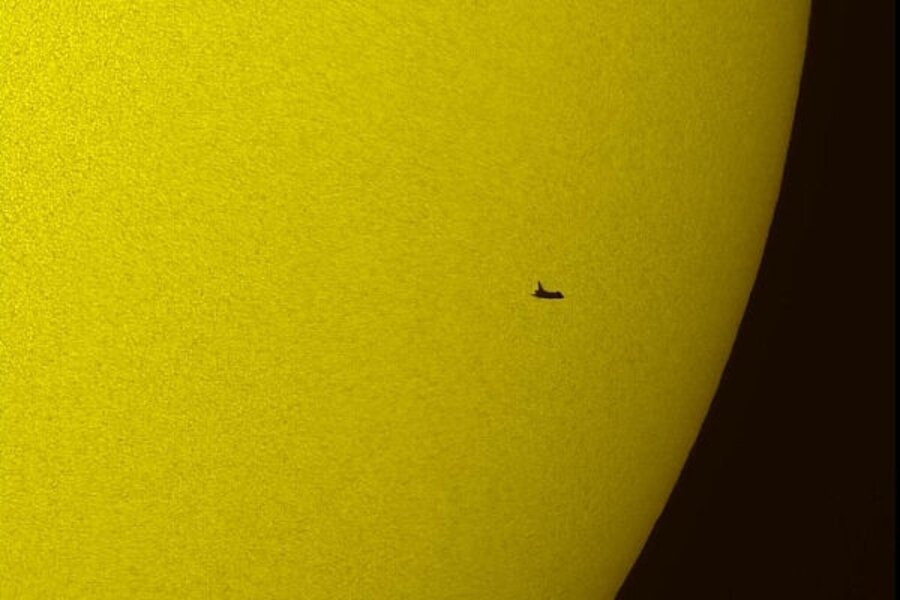NASA's Mr. Fixits give Hubble Space Telescope life-prolonging hardware
Loading...
Chalk up another stellar spacewalk for astronauts aboard the space shuttle Atlantis.
In a spacewalk that fell four minutes shy of eight hours long, mission specialists Mike Massimino and Mike Good replaced some of the Hubble Space Telescope's batteries and three gyroscopes -- devices critical to the observatory's ability to navigate the skies. Both sets of hardware passed their "aliveness" and functional tests with flying colors.
"We had a few hurdles we didn't expect, but we completed all the tasks," says Tony Ceccacci, the mission's lead flight director. In fact, the outing went so well that the spacewalkers were able to perform a few extra tasks in preparation for tomorrow's spacewalk, the third of five outings on five consecutive days.
Additional good news came from the team putting the new WFPC3 camera through its paces. David Leckrone, the observatory program's senior scientist, announced that the instrument had successfully completed the second of two key tests since its installation yesterday.
You can find more information about the mission here and here. And if you're interested in watching tomorrow's repair call, you can hook into NASA's webcasts here.
So far, it's working like a champ, although it sees nothing yet with the telescope's lens cap, or aperture door, closed. And it needs to be cooled to very low temperatures to ensure it performs as designed. Scientists expect to take the first images with the new camera about three weeks after the Atlantis returns. In the meantime, engineers will continue to run more detailed tests on the camera as well as begin to chill it.
With half the battery tasks complete, new gyroscopes, and a new data-handling center installed, "we're along way already to greatly extending the longevity of Hubble," Dr. Leckrone says.
The main chin-scratcher of the day involved one of the replacement gyros. It refused to sit perfectly flat in the space designed for it, preventing Dr. Massimino from bolting it into place.
So, after weighing options, spacewalkers Mike² went to plan B. They installed a refurbished spare gyro. Every Hubble repair mission launches with a spare gyro aboard, even if gyro replacement isn't on the to-do list, explains Preston Burch, the Hubble program manager at the Goddard Space Flight Institute in Greenbelt, Md. This one has been dubbed the Hanger Queen. Astronauts have carried it up on every servicing mission since the first one in 1993.
And you thought that would be easy/hard!
So far, this mission has followed a typical pattern for Hubble visits: the easy (in simulations) shall be hard and the hard shall be easy. Tasks somewhat difficult in NASA's neutral-buoyancy lab -- an enormous pool where astronauts practice their spacewalking tasks -- have proved somewhat easier on orbit, while the tasks easy in the pool have given astronauts some trouble.
That leads Leckrone to predict that tomorrow's spacewalk will be the easiest yet. In addition to installing a new scientific instrument, the cosmic-origins spectrograph, John Grunsfeld and Drew Feustel will tackle repairs to the observatory's advanced camera for surveys (ACS). Thick-gloved hands will be trying to fix something that wasn't designed to be repaired on orbit. The task involves working with circuit boards and tiny latches in a space that wasn't designed with the Maytag repairman in mind.
The duo also will remove a box containing special mirrors that fixed an embarrassing vision problem the telescope had when it was first launched. The vision problem was traced to a manufacturing mistake as the telescope's light-gathering mirror was made.
Initially, NASA had planned to repair the ACS over two spacewalks. But mission planners decided to try it all in one shot.
Mucho training
"John Grunsfeld has trained to within an inch of his life for this," Leckrone enthuses. "He's got this task nailed."
Hear that, John? No pressure or anything...
One other bright spot coming out of today's mission briefing: The shuttle is cleared to land, based on inspections to its thermal-protection system.
That's a provisional green light. The final OK comes after Atlantis's crew releases Hubble and heads to a lower, less space-junk-ridden orbit. There the crew will conduct one more inspection of the tiles and reinforced carbon composites that protect it and the crew from the heat of reentry. Then, if all is well, they head home.
The last exchange of the day between mission control and Atlantis came at 8:59 p.m. Eastern Daylight Time -- clipped and to the point.
Mission control: "Good night, Atlantis."
Pause.
"Gooood night, Houston," commander Scott Altman replied.





